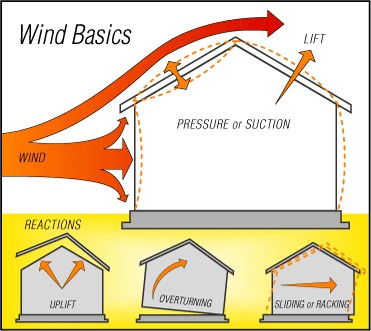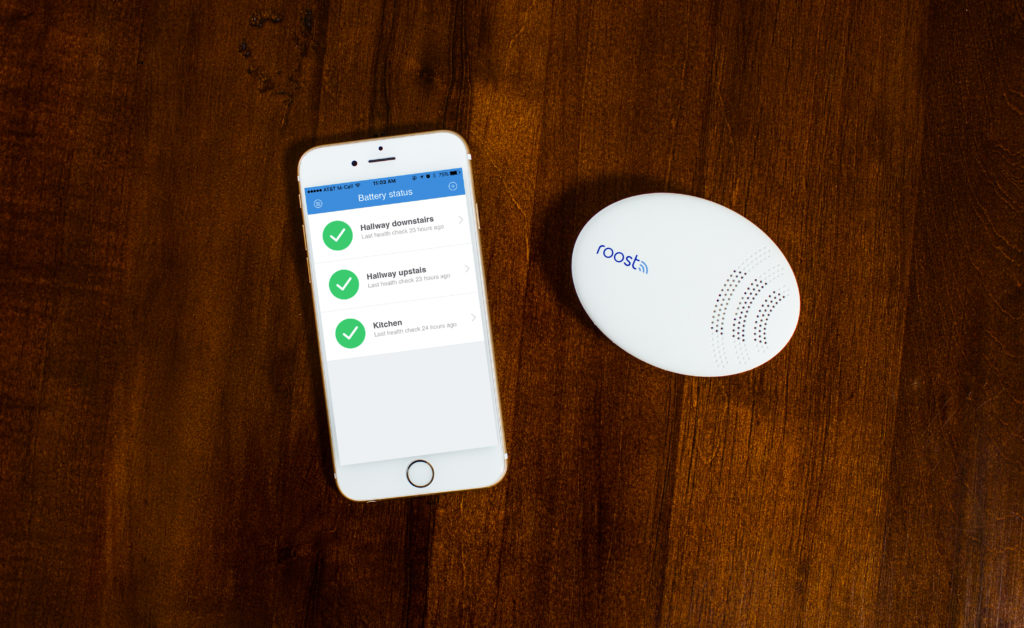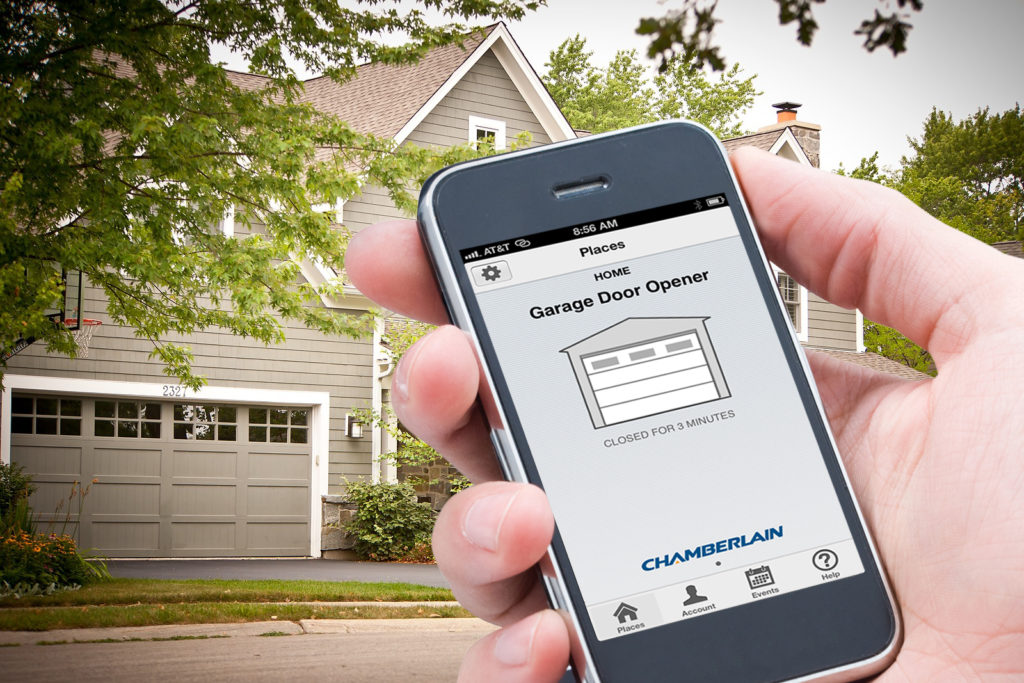How your choices affect the cost of your new home.
People expect their new home to be a strong, safe, well-built structure. After all, isn’t that what building codes are for? Well, the answer is YES…and NO. Building codes do establish some minimum performance criteria. But codes vary from location to location; they vary in their interpretation, inspection, and enforcement; and the most likely perils vary geographically.
As homeowner insurance premiums rise to cover ever-increasing claims, paying attention to stronger and safer construction details can pay off in reduced insurance premiums as well as peace of mind. And, many of the decisions to be made in this area are realistic only when the home is being built. The types of perils we are most likely to encounter are grouped below into three main areas: natural disasters; fire and water damage; and personal security.
NATURAL DISASTERS
High Winds
It doesn’t have to be a tornado or hurricane. Every year, high winds cause billions of dollars in damage to homes across the country. Essentially, when wind strikes against your home, several unfortunate things can happen. Your home can be lifted up and be slid off its foundation. Wind forced up under the eaves of your roof may tear the roof off. Wind can also cause the house to rack (lean) or cause an upper floor to shift where it is connected to the main floor.
Illustration courtesy of Simpson Strong-Tie.
(Click on image to enlarge.)
The solution is to create a strong structure by providing what is called a “continuous load path.” This means making sure the roof is strongly attached to the walls; the first and second stories (of a two-story home) are reinforced where they connect; and that the connections for the home to its foundation are strong and secure.
Certain types of building systems, such as concrete wall systems and Structurally Insulated Panels (SIP), are inherently stronger than conventional “stick-framing.” Yet, attention must still be paid to properly attaching the roof (and how SIP wall panels are attached to the foundation).
The Simpson Strong-Tie company, manufacturer of metal connectors used in home building, has developed a prescriptive method for building homes to withstand varying levels of high winds. For less than $1,000 more for a typical-size new home, additional connectors will make it much more likely to withstand high winds.
Siding and Sheathing
In strong winds, debris, tree branches, etc., can be turned into dangerous projectiles. The insurance industry has shot
2” x 4” wood studs out of a cannon at 80 mph at common exterior wall structures. Masonry siding materials have fared well, but they’re typically more expensive and may only be used on the front of the house, if at all. The 2” x 4”s more easily penetrated other siding materials.
There are a wide variety of siding materials available today, the most popular of which include vinyl, hardboard, fiber-cement, and engineered wood. Fiber cement and engineered wood tend to better survive severe weather, and various levels of wind and impact resistance can be found in each category. As with roof coverings, high wind and impact rated siding may qualify for homeowner insurance discounts. Talk to your insurance agent.
The exterior wall sheathing (the material attached to the outside of the framing studs) is your next line of defense after the siding. Insulating rigid foam sheathing, while beneficial for energy efficiency, provides little protection against airborne projectiles. Engineered wood (plywood or OSB) are better choices. And, in the face of strong winds or seismic disturbances, properly nailed engineered wood sheathing also adds structural rigidity to the walls.
Windows
If extreme pressures from high winds cause a window to fail or airborne debris shatters the glass, the damage, particularly from water, can be extensive. Especially in coastal areas or those along “tornado alley,” windows with high design pressures or windows with impact-rated glass can be a wise choice. Functional storm shutters and storm screens are other solutions for window protection.
FIRE AND WATER DAMAGE
Fire Damage
There were approximately 380,000 residential fires in 2018 in the U.S., according to FEMA. Several prudent measures can greatly reduce your home’s risks associated with fire. Outside, the materials used on the exterior of your home can reduce the likelihood of wildfire igniting your home. Non-combustible materials are best: fiber cement siding; tile, metal, slate, concrete, or fire-rated asphalt shingles, etc.
Inside your home, building codes require smoke detectors, which may provide precious additional seconds for your escape. Create a family escape plan and rehearse it (including the meeting spot outdoors where you will rendezvous). Consider especially how people will escape second-floor rooms if hallway access is blocked. In the kitchen, a fire extinguisher is recommended. Be sure it is rated for all types of fires (grease, electrical, etc.).
Water Damage
According to the Insurance Information Institute, more than one in fifty homes in the U.S. experience extensive non-weather-related water damage each year. While there is little we can do to protect our homes from a nearby river overflowing its banks, much of the flooding we encounter is due to leaks that occur within our homes. Sinks, toilets, and bathtubs overflow… washing machine hoses burst… water heater tanks rupture… all spelling disaster.
Water leak detection + automatic water shut-off devices are quickly becoming popular. As the name suggests, such systems typically consist of small water sensors placed where catastrophic leaks might occur (laundry, baths, water heater, kitchen). If these remote sensors get wet, they send an electronic signal to your smart phone and/or a shut-off device that turns off water to all parts of the home. The bottom line? You have a little puddle to clean up, not a flood!
Roost Wi-Fi enabled Smart Sensor detects water leaks and sends an alert to your smartphone. (Photo courtesy of Roost)
PERSONAL SECURITY
Almost 300,000 homes are broken into every year in the U.S. According to law enforcement agencies, most unlawful entry is through doorways. The first, and most obvious step is to have dead bolt locks on all exterior doors, including the door from the garage into the home.
Exterior Doors and Locks
Three types of failures may occur when thieves attempt to kick in a door:
- Poorly built doors will simply break apart under stress. High quality steel, fiberglass, or solid wood doors significantly reduce the chance of this occurrence.
- Second, the strike, latch, or bolt can fail. Look for American National Standards Institute (ANSI) grading on the locking hardware. A grade 1 is strongest, offering the best protection, but more expensive. Grade 2 and 3 are acceptable in non-critical areas. Avoid locks with no grade at all. Also look for heavy gauge strike plates.
- Third, the mounting hinges can pull away from the door frame. The best defense here is to use ANSI Grade 2 or better rated hinges and long 3” screws to secure the hinge to the doorframe. (And, if the door swings outward, be sure to use non-removable hinge pins!)
If thieves do not have to be concerned about making noise, they may drill a lock to gain access to your home. Some manufacturers have taken special precautions to safeguard against having their locks drilled; UL-437 rated locks meet universal standards for drill and pick resistance.
Lighting
Lighting is one of the best deterrents to break-in. ‘Lightscaping’ is a term used to describe exterior lighting for both aesthetic value and security. A well-lit house presents a much higher risk of being seen and is therefore a less desirable target.
Lightscaping systems can be powered by either regular household current (120 volt) or low voltage (24 volt) supply. Low voltage systems can be less expensive to purchase and install, use only 1/3 as much power as household current systems, and are safer in the event of a cut or exposed wire.
Motion-activated light fixtures are an excellent alternative. The sudden presence of light can be enough to scare off thieves and can also grab the attention of anyone else in the neighborhood.
Whole House Surge Protection
With more and more products in our homes utilizing sensitive electronics, surge protectors can protect expensive entertainment systems, computers, communication equipment, appliances, and more from sudden voltage spikes or power outages. Inexpensive whole-house surge protectors can be installed in the home’s main breaker panel starting at under $200.
Garage Doors, Openers
Hospital emergency rooms in the U.S. treat thousands of victims of garage door related injuries every year. So that neither you nor anyone in your household show up in that statistic:
- Select garage doors that are designed to reduce the likelihood of someone’s fingers getting pinched or crushed between the panels of the garage door as it closes.
- Look for garage doors that use specially designed or enclosed springs that cannot fly free if they break.
- Garage doors are one of the first areas of a home to fail in high wind conditions. If you are building in an area prone to hurricanes, tornadoes, or other high wind scenarios, consider choosing a garage door that is manufactured and rated for high wind and impact resistance.
- If you install a keypad for the garage door opener, make sure it is mounted high enough that young children will not be able to play with the buttons.
Theft. The easiest way for would-be thieves to access your home is through an open garage door. It’s almost an invitation for theft! The Chamberlain garage door openers with myQ® Garage & Access Control App allows you to open and close your garage door from your smartphone. It will also alert you if the garage door has been left open or if it is opened while you are away.
(Photo courtesy of Chamberlain)
AS A NATION, WE CAN BUILD BETTER HOMES. And one definition of “better” is stronger and safer!
For more resources on thoughtful design and products:
- View other articles on our blog
- Browse our Her Home™ Magazine
- Thoughtful Design Concepts
(Product spotlights are for informational purposes only.)



